Updated: 23-Jul-2024
Snecma is the result of the union of several French motor companies starting in 1946, after WWII, when a reorganization in the sector became necessary.
-It is, therefore, a conglomerate that is a bit difficult to define, although we are going to try.
-To reach the main “trunk” we will go down the different branches.
-The one that comes from higher up - in this case from more years ago - could be Dietrich, founded in 1684 but which did not found the “Société Lorraine” at the Old Dietrich Establishments until 1915.
-In 1930 it would create SGA to reach 1934 when it was merged into SNCM and later, in 1941, into SGMA or Société générale de mécanique et d'aviation (General Mechanical Aviation Society).
-During the occupation, in 1944 it formed part of Gnome-Rhone.
-Gnome, created by Louis Seguin in 1905, has the precedent of having made the Seguin engine before, in 1895.
-In 1912, LeRhone was created and in 1915 Gnome and LeRhone joined to form Gnome-LeRhone (Gnome & Rhone or Gnome-Rhone).
-Following the vicissitudes described in this publication and carrying out a certain traceability we see that some absorb others along their path.
-Examples are Potez, Regnier, GHL, SCEMM.
-Renault, , created in 1898 by Louis Renault, made its first aviation engines in 1907.
-In 1937 it was the “Socièté Renault pour L’Aviation” and in 1945 the Air Aeronautical Workshop in Billancourt.
-Now we arrive at 1945 when SNECMA or “Socièté Nationale d’Etudes et Construction de Moteurs d’Aviation” is created.
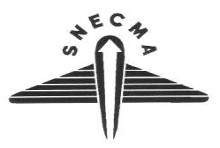
“Classic Snecma logo”
-The chosen logo was used for a long time although it underwent changes as we see below, with the constant flow of absorptions (ATAR, SEP, SEPR, LRBA, Voisin in 1960, Hispano Suiza around 1967, among others).


“Two other logos of the brand”
-In the same way, the new SAFRAN Group, created in 2003 brings together Snecma with other companies such as Turbomeca or Microturbo.
-Snecma has collaborated with many companies around the world on joint ventures to make new engines, as will be shown, and creating new mixed logos.
Some of them will be offered in this chapter.
-The engine production of that first period was a continuation of some of the events during the German occupation in WWII.
-Some German aircraft were powered by Gnome-Rhone engines during that period such as the 14M and N on the Henschel 129, Messerchmitt 323 or Gotha Go-244.
-And vice versa, it made the German BMW 132Z engine that was installed on the Junkers Ju-52, used to transport troops and goods.
-Once the war was over, the production of this first period was based on the BMW-132Z and the G-R with 14 and 18 cylinders, on the Argus 12S and T that was built by Renault, in addition to the 4PO3 Bengali and 6Q, the Regnier 4LO and some more.
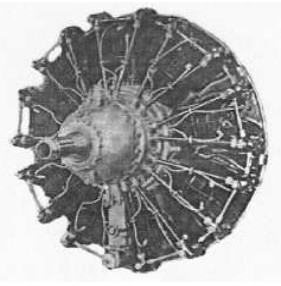
“Snecma-BMW 132Z”
-Gnome-Rhone continued building the 14 and 18 cylinders in addition to some tests that we will describe at the end of this episode dedicated to piston engines.
-The GR 14M was designed before the war and at that time it gave only 700 CV, although its size was less than a meter in diameter.
-It received the name “Mars” and the Germans took profit of its production during the occupation.

“GR 14M”
-After WWII, about four hundred 14M engines were made by Snecma. Of the 4,700 made until 1945, about 2,500 were requisitioned by the Germans.
From 1946 to 1951 five hundred GR 14N engines were manufactured in the versions 25 and 54/55. Depending on the variant, the power was between 900 and 1200 CV.
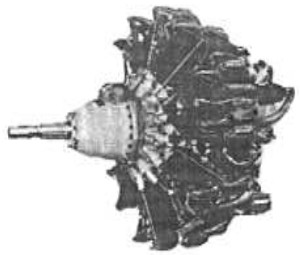
“GR 14N 54/55”
-The improvements with respect to the 14K, from which it was derived, were the increased compression ratio, nitrided cylinders, greater surface area of cooling fins, exhaust valves with sodium, reduction gear, and a supercharger with a two-speed option.

“GR 14N25, front view” (PiP)
-This engine was manufactured under license by Alvis, Manfred Weiss and Klimov.
-It seems that in the manufacture of the 54/55 war materials were used that did not give the desired result. To correct this problem, the significantly improved 14N 68/69 was built and eventualy the 14N 70/71 passed the 500 Hrs resistance test, around 1949, obtaining its approval.
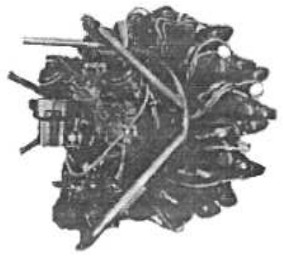
“GR 14N 68/69”
-The power of the latter (70/71) was 1,120 CV.
-After the war the 14R production was also resumed, giving 1,600 CV. It was known as R-200. There were the R-206, R-207, R-208 and R-210.
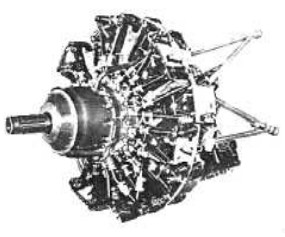
“GR 14 R-210”
-The R-210 was a 14-cylinder, double-row radial with just over 38 liters of total displacement and giving 1,600 CV.
-The 14U engines were formidable 2,200 CV engines, derived from the -R, reinforced and they had larger reduction gear.
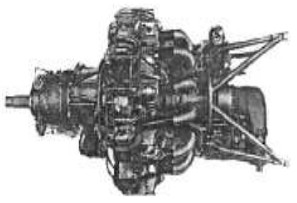
“GR 14U”
-The U version had a two speed compressor. It could have a carburetor or gasoline injection. With all this, the engine was appreciably longer. It was tested around 1948 and only a dozen of engines were built.
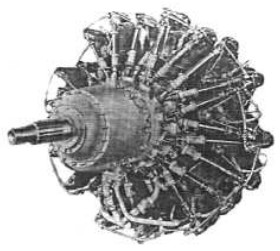
“GR 18R”
-The 18R was an 18-cylinder, double-row radial and gave a power of 2,100 CV.
-With a two-speed compressor it could reach the power of 1,600 CV at more than 6,000 meters of altitude. After the war they wanted to continue with this engine but preference was given to the 14U project. With water injection the 18R reached 2,200 CV.
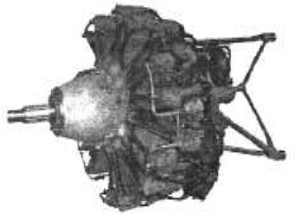
“GR 14X”
-The 14S “Super Mars” project led to the 14X. This was a very small engine that gave about 800 nominal CV. The ICAO approved it offically at 680 CV for the 14X-02 variant and 690 CV for the -04. The 14 XH were intended for helicopters.
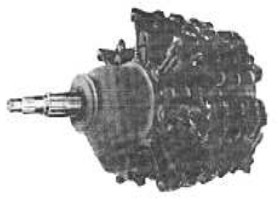
“Snecma 28T”
-The project of joining 4 seven-cylinder rows to reach 3,500 CV, did not prosper, remaining only a scale model of the engine.

“Snecma 36T”
-Another project, the 36T was to reach 4,100 CV. It was fully faired, with propellers similar to modern Prop-fans, contra-rotating and with internal fans that forced the engine cooling air from the front intake. The whole unit turned out to be very aerodynamic.
-From Renault's "heritage" it received the 4P, 6Q and 12 S and T engines. We have a photo of the 4P03 engine from the Villaroche Museum.
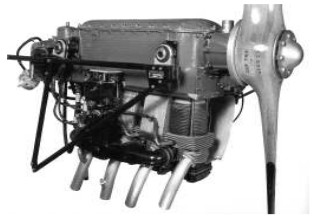
“Snecma-Renault 4PO3”
-The 4PO3 and the acrobatic 4PO5 engines are from 1937 but in 1946 they were made by Snecma. They had four inverted cylinders and gave between 100 and 140 CV. By the end of the series in 1951, some 1,580 units had been manufactured.
-The 6Q from 1935 with six inverted inline cylinders is also produced at Snecma.
-They could rotate right or left depending on the version.
-These supercharged engines gave 300 CV at 2,500 rpm. They had a displacement of 9.5 liters.
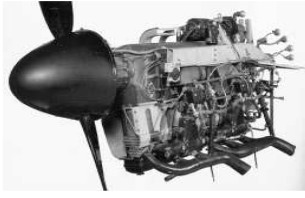
“Snecma-Renault 6Q”
-A total of about 7,600 engines would be built since 1940, of which the Germans would requisition about 1,660 units. The production ended in 1952.
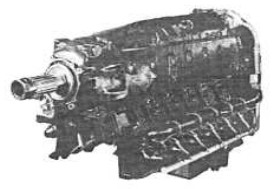
"Snecma 12S"
-The Snecma-Renault 12S was the 660 CV Argus As-411.
-The 12S had 12 cylinders in an inverted V and whose details we can see in the below illustrations. Especially in the longitudinal cross-section.
-The 12T appeared very late, in 1955, and it was an improved version of the S, delivering the same power.
-Before closing the production line of these engines, more than three thousand were made, between the S and the T.

“Longitudinal cross-section of the Snecma 12S”
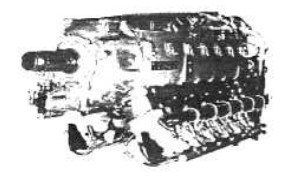
“Snecma 12T”
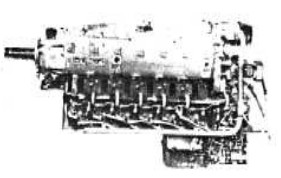
“Snecma 12T, side view"
-The Regnier 4Lo engines were the models manufactured by Snecma since 1946/7, starting with the 76 CV 4Jo of which only 10 units were made. Production began to focus on the 4Lo engines that gave 140 CV at 2,350 rpm, reaching 170 CV at 2,500 rpm. During the Snecma period and until 1951, about 1000 engines were made.
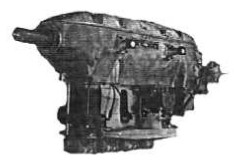
“Regnier 4Lo”
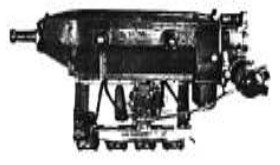
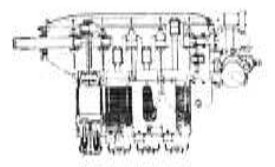
“Snecma-Regnier 4Lo, side view and cross-section”
-From the Regnier engine range, engines such as the 74/76 CV 4Jo, the 98 CV 4Ko and the 4Lo, only the latter was the one that went into mass production at Snecma.
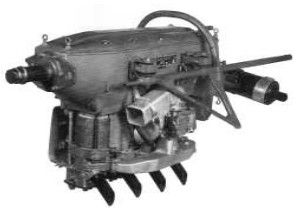
“4Lo with bench and electric and hand starter”
-The Regnier 4L26 model would reach 170 CV. It was mounted on the Farman Monitor III. But not from Snecma.
-The Jumo 213A was made by Snecma after the war as 12H.00. (see Sfecmas).
-Snecma obtained licenses from Bristol to manufacture Hercules sliding sleeve engines, models 758 and 759 for the French Noratlas transport aircraft.
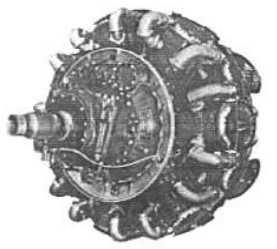
“Snecma-Bristol, Hercules”
-They have been manufactured since 1953, and they had 14 cylinders in two rows with a displacement of 38.7 liters. They gave 2,070 CV at 2,800 rpm.

“Noratlas with Hercules 759”
-Sliding sleeves are known in France as “louvoyantes” for having a linear combination movement with slight limited turns.
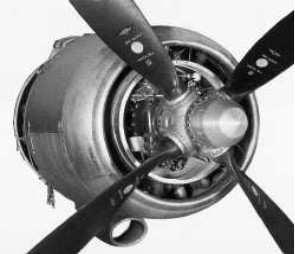
“Snecma Hercules 758/759”
-The figures 758 and 759 indicate the right-hand or left-hand rotation of the engine.
-Almost 1,375 engines were manufactured. They were used in France, Germany and Israel.
-Snecma's relationship with piston engines does not end here.
-As we will see later, the collaboration with SMA and its four-cylinder Diesel General Aviation engine will finally lead to its integration into Snecma.
-And it is around 1950, before or after, that most of the world's motor companies tested pulsejets and ramjets. Snecma was no exception.
-To begin with, it has two very interesting pulsejet engines: the Espette and the Ecrevisse.
-We can see them both in the Villaroche Museum and in the Paris Le Bourget Museum, the MAE.
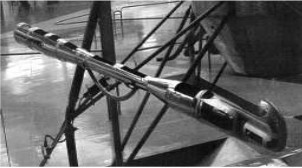
“Escopette at the MAE”
-The Escopette was in the group of “valveless” pulsejets.
-Below we see some details: to prevent combustion reflux forward, the intake is curved, this effect being minimized.
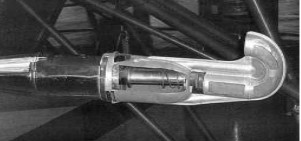
“Curved intake and mixing chamber”
-The two Snecma pulsejets are characterized by not having valves (remember the shutter valves of the V-1) and their operation is based on Marconnet principles (see).
-For these engines the study and calculation of dimensions is highly retrained and tested in multiple bench and flight tests.
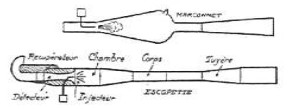
“Marconnet and Escopette”
-The operation of this pulse jet, which does not have any mobile organ, is simply a game of asymmetrical resistances, which for some remain mysterious.
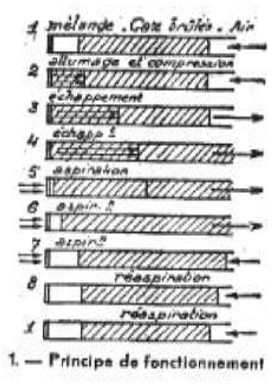
"Pulsejet operation principle"
-The above figure shows the cycle according to its designers Bertin and Pario at Snecma, although the basic phenomenon was already discovered by Huyghens in 1670, which confirms that there is nothing new under the sun. It was also carried out by Holzworth in 1908, by Marconnet himself in 1909, or by Kara in 1910. Paul Schmidt did a few decades later.
-The gases themselves act as “a piston”, creating suction for the next cycle. Although it was apparently simple, it required a large number of trials to complete.
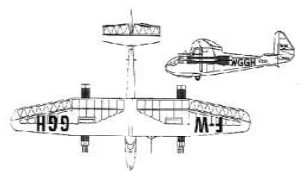
“Escopettes on the Emouchette glider”
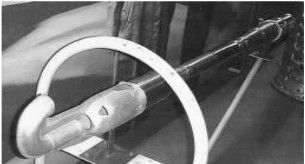
“Escopette at the Snecma-Safran Museum”
-The Escopette at the Snecma Museum in Villaroche, perhaps the best preserved one, received restoration by the veterans of the “Amical” of the Museum.
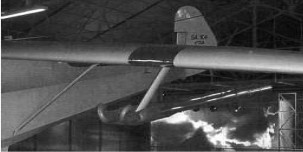
“The four-engined Emouchette”
-The flight tests were carried out in 1951. Following the above explanation, the venturí of the chamber acts as a “detector” and the inlet tube angled at 180° “recovers”.
-The thermodynamic cycle that occurs is based on that of Lenoir in his compression-free gas engine.
-The Escopette weighed almost 5 Kg. and gave a thrust of 10 Kgf.
-As the “recovery” returned part of the gases that were undesirably coming out of the front to the direction of travel, the thrust was the sum of both impulses. Model 3340.
-We now comment on the other Snecma ramjet, the Ecrevisse, which had a different shape (see the Lockwood-Hiller). It was like a duct folded in half, like a musical instrument, both the entrance and the exit were directed backwards, for the same reason as the Escopette as it is valveless too.
-The Ecrevisse was developed by Pierre Servanty and Bertin.


“An Ecrevisse picture and operating diagram”
-The Ecrevisse carried the nickname “Tromblón” (Trombone) due to their resemblance to the instrument.
-Type A weighed 6 kg of and gave 20 kgf of thrust, and type B weighed 10 kg and gave 30 kgf of thrust. (and C, D). They are mentioned under Hillef license.

“Real appearance of the 2nd type Ecrevisse”
-A second Ecrevisse engine is being restored in the workshops at the Snecma Museum.
-For the veteran mechanics of the factory who dedicate their retirement to this work through the “Amical del Museo”.
-Regarding its use, there are references to installation projects in a kind of Ecrevisse-Volant (similar to the Atar Volant), for unmanned vehicles.
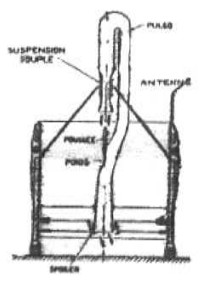
“Ecrevisse-Volant”
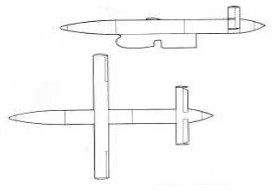
“Aviolanda AT-21”
-Below we show an artistic vision of the installation of an Ecrevisse engine on the Aviolanda.
-It delivers a thrust between 45-70 Kp, at a pulse rate of 95 per second. It was driving the vehicle at 350 km/hr.
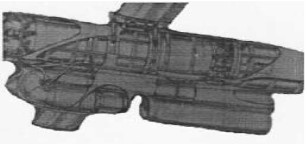
“Cross-section of the valveless Ecrevisse type ramjet”
-As a curiosity, an Irish industrialist acquired one that he installed on a car.

“Ecrevisse on a land vehicle”
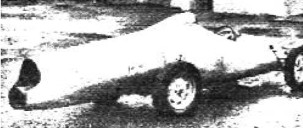
“The faired vehicle with Ecrevisse engine”
-We can see that in front of the flame return tube there is a type of venturi to act as a conduit and at the same time as a thrust increaser.
-This same venturi system is in the missile mentioned above, but inverted. From Aviohollanda. (Aviolanda).
-The car in the picture above belonged to Mr. Merkle of the Irish Tapestry Co. Ltd.
-He used a Cooper Mark V sports car, with which he reached 200 km/hr.
-The noise was loud but bearable, almost the same as the 500 cc car engine, with free exhaust.
-We now review some of the Snecma ramjets. Known as Ramjets and aerothermodynamic and contraction ducts “Athodyds”.
-Once again we return to the Snecma Museum and we find a project known as the “University of Berlin”.
-It was a reduction of the Snecma 402B. The studies began in 1964 and tests were carried out two years later, in 1966.
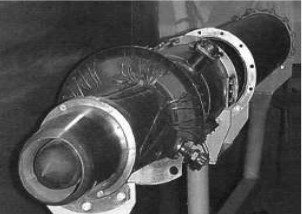
“The University of Berlin, in Villaroche”
-We present a side view with an open chamber. Weighing only 4.8 Kg, it gave a thrust of 10 Kgf and optimal operation was calculated at 1.85 Mach.

“The Université”
-At Snecma there are other ramjets, the “S400” series, such as S-401A, S402 A1, A2, A3. The S405A1, S406A2, S407A2.
-Others have been HS1, GS1, the 9-pulse 5158 and the 30-pulse version. The Arsenal 250 (cible) was also produced by the company.
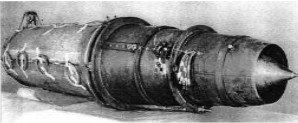
“S402 A3, intake view”
-And below the S402B's injector battery with the anti-return flame grill.
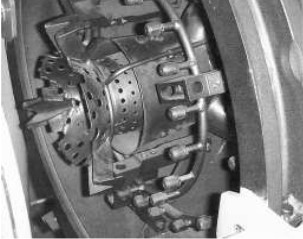

“S402B engine parts”
-This ramjet is from 1957. It weighed 160 Kg and its thrust was already estimable: 2,200 Kgp at sea level producing a speed of 1.7 Mach, and at 11,000 meters altitude with a speed of 2.7 Mach at half the thrust, 1,100 Kgp.

“The S-402B engine, in Villaroche”
-Perhaps it is time to make a comment here. Since Bertin has been mentioned and that one of the absorbed companies had made the engine for the Ludion aircraft (AeroSpatiale) and since the engine of this personal vehicle was found in Snecma's inventory, we would like to say that the operation of the rocket motor boosters is done quite with the principle of ramjets, with very low performance of course.
-Below we show two views of this device in which we see the blind-type fin to guide the flight. It is exhibited at the MAE.
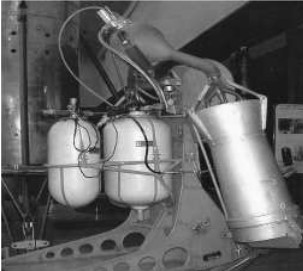
“Ludion thruster assembly”
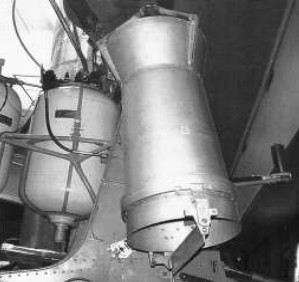
“Detail of Bertin's horn”
-When the time came to build turbines, the manufacture of piston engines gradually ceased, eventually dedicating themselves to spare parts and maintenance.
-We know that it included ATAR, as we saw in previous chapters. In Snecma, the Atar engines would evolve to the maximum, as we will see.
-We now receive an illustration of the TA-1000 indicating that it was a turboprop.

“TA-1000”
-It had clear traces of a Rateau engine due to the type of compressor and arrangement of the combustion chambers. And the ATAR staff together with chief engineer Mr. Garnier went to Snecma.
-The TA-1000 is of the 5,000 CV class with double, contra-rotating, coaxial propellers.
-The first turbines were the TA-1000 and the TB-1000 turboprop, designed in early 1948. There was the TB-1000A as well. They were known as Snecma/Rateau.


“Two TB-1000”
-The second photograph of the TB-1000 has been obtained at the MAE, from its documentation file.
-It was tested until the early 1950s. it gave 1,300 CV to the shaft.
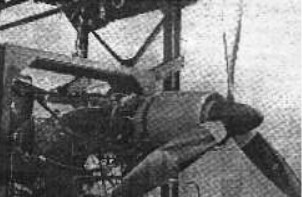
“TB-1000 on bench”
-Below we show a longitudinal cross-section of this turboprop, which would later reach 1,520 CV with a single propeller.

“TB-1000 cross-section”
-See the ATAR chapter to know the traceability of this brand and its arrival at Snecma.
-Just as it materialized the projects of the “Atelier Technique Aeronautique Rickenbach” starting with the Atar-101.
-It did the same with the engines known as Marcel Dassault MD30R and others, which were actually the English Vipers.
-The Rolls-Royce “Tyne” that was built by Hispano Suiza, together with MTU and FN, went to Snecma when it absorbed HS.
-The Tyne Mk21 and Mk22 continued to be manufactured by Hispano Suiza, at its facilities but now as a Snecma Division.
-It was intended for the Atlantic and Transall airplanes. Their power was 4,500 kW, with the turbine rotating at 15,250 rpm.

“HS-Snecma Tyne”
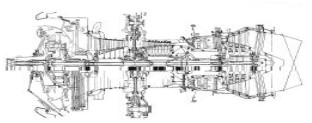
“The Tyne 21 of the Transall and the Atlantic, cross-section”
-The story of Atar comes from Germany (occupied French zone) -revising the memory a little-. Dr. H. Oestrich, former chief engineer of the BMW 003 project, had taken refuge in the town of Rickenbach.
-At the end of 1945 the 101V project had finished (see also “Group 0”)

“ATAR Logo”
-As the French government was interested in the engine, it moved the company to France and Snecma would be in charge of building the engine.
-The Atar 101V was the prototype that remained in its test bench stage. It gave 1,700 Kgf thrust. This was in the year 1948.
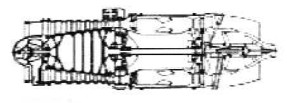
“Atar 101A”
-The Atar 101A gave 2,200 Kgf of thrust.
-It had a more rigid rotor and the accessories remained in the contour line of the engine. This was in 1949.

“Atar 101B”

“Atar 101B-1”

“Atar 101B-2”
-The Atar 101B gave 2,400 Kgf thrust. The B-1 had modified combustion chambers compared to previous models. In the year 1951.
-The turbine wheel had solid blades.
-The B-2 shows an elongated ejection channel that corresponds to an installation on an “Ouragan” aircraft.


“Atar 101C”
-The Atar 101C already had the starter housed in the front entry nose cone and the elongated nozzle as corresponded to its assembly on the Mystere. It was only used in tests and delivered 2,800 Kgf of thrust.
-Until now, the Atars had a translating-bullet nozzle to vary the outlet opening according to operational circumstances.

“Atar 101D-1”
-The D-1 gave 3,000 Kgf of thrust, increasing the diameter by only 35 mm. The translating-bullet nozzle is replaced by a variable eyelid nozzle.

“Atar 101D-3”
-The D-3 version has a nozzle with aerodynamic restriction, taking in pressurized air at the level of the chambers. These engines were built during 1952-53.
-A pre-chamber ensures re-ignition in flight up to 6,000 meters. It continues with 3,000 Kgf of thrust.
-A 101D with afterburning, giving 3,800 Kgf of thrust, became the 101F.

“Atar 101D with afterburner”
-The Atar 101E with thrust of 3500 Kgf, had an 8-stage compressor. The engine was 108 mm longer, and the ejection channel corresponding to the all-weather and ground attack fighter, the Vautour. Year 1954.

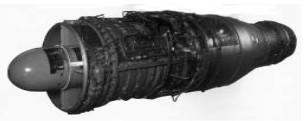
“Atar 101E”
-The Atar 101F, with water injection and post-combustion, would develop 4,000 Kgf of thrust.

“Atar 101F”

“Atar 101G-2”
-The 101G-2 with PC gave 4,400 Kgf of total thrust.

“Atar 101G-3”
-The 101G-3, from 1956, gave 3,330 kgf normally at 8,400 rpm (relatively low speed) and 4,310 kgf with afterburning.

“Atar 08”
-The Atar 101 served as the basis for starting two new families of engines that have been very important: the Atar 08 and the Atar 09. Both group together refinements obtained from the experience of the 101 series.

“Atar 08” (PeT)
-The Atar 08's dry thrust is 4,310 Kgf, the same as the 101G-3 with afterburning. The compressor increases to 9 stages. It was the first engine with autonomous starting, the Noelle starter from Microturbo. See.
-The Atar 08 belongs to the new generation of Atar reactors that appeared around 1954. There were B and C models
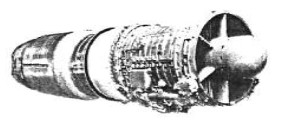
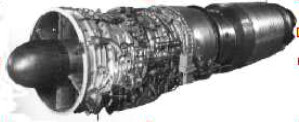
“Atar 09B” (PiP)
-From 1958, the Atar 09B had afterburning, giving 4,170 Kgf dry and 5,880 Kgf wet, with afterburning.

“Atar 09C”
-The Atar 09C (sometimes 9C) has been used in a wide range of French military aircraft such as the first Mirage IIIE and M-5, being known throughout the world for its operational performance and ease of maintenance. The compressor has 9 steps and the turbine has two. It gives 6,000 kgf thrust similar to the 09B.
-Before treating the 8K and 9K, we will say that we have encountered other Atar families without details that indicate what they were like, such as the Atar 201, Atar 202 and Atar 203 and another Atar line such as the M3 for Mach 3, the M26 and the M28 known as Super Atar.

“Atar M3”
-The Atar 8K-50 (see Atar chapter) is an engine that is protected against marine corrosion as they are intended for on-board Super-Etendards.

“Atar 8K-50”
-They give 2,500 lbf less thrust than its older brother the 9K-50.
-The first 8K-50 engines began to be delivered in 1977. They reached 4,800 kgf.
-The Atar 9K engines start with a basic wet thrust of 6700 Kgf, and 4700 kgf dry. The 9K-50 rose to 4,920 and 7,060 Kgf, respectively.
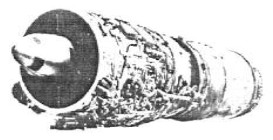
“Atar 9K-50”
-The 9K has greater thrust than the 8K and can also maintain supersonic flight.
-It also consumes 10% less fuel than the previous ones and was chosen for the Mirage F1 and the Milan.
-They were used on Marcel Dassault's variable geometry twin engines.
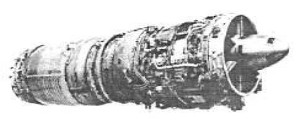
“Atar 9K-50”
-Snecma, in addition to its important collaborations with other companies, especially with General Electric to manufacture CFM, maintains its line of genuine French turbojet engines such as the ATAR.
-In recent times they are the Atar 9k50, M53, M88, the Tyne 21 and the Larzac 04, mainly. The total length of the first of almost 6 meters and 72 kN of thrust stands out.

“Atar 9K-50”
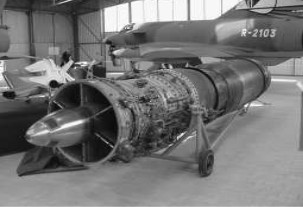
“An Atar 9K-50 at the Montelimar Museum”
-Before continuing with the brand's next engines, two very interesting ones have been hidden from us, overlapping between the important production of the Atar.
-These are the barely known Vesta and Vulcain.
-The Vesta was a small turbojet that had been designed to meet the requirements of the French Air Ministry to power a light fighter, such as the Breguet 1100.
-The Vesta has sometimes appeared as R-105.
-In 1953 Snecma began to develop the Hispano Suiza R-800 that gave rise to the Vesta.
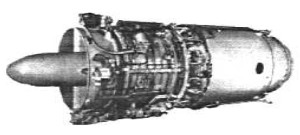
“Snecma Vesta R-105”
-It had a 9-stage compressor, annular chamber and a simple turbine. It gave 1,200 Kgf of thrust.

“Snecma Vesta”
-The Vulcain, much larger, gave 5,500 Kgf of thrust.
-Its design began in 1950 with only 4,500 Kgf.
-But when the bench tests were done, it turned out to be 5,500 Kgf. The reference of this engine was R-104.
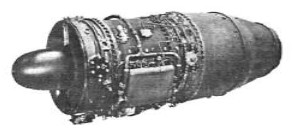
“Snecma Vulcain”
-Sometimes written Vulcan. It flew for the first time in an SE 2010 Armagnac, as a flight test bed.
-Below we offer a cross-section of this R-104 Vulcain engine.

“Snecma Vesta”
-Among the special engines to be used in vertical takeoff maneuvers, Snecma also made some, in the style of the Bristol and Rolls-Royce RB-108 and RB-162 engines.
-They are the M-36, Zoom 2, M41 or the one known as “Plat” because it is extremely short or flat.
-The M36 is from 1962, called a sustainer engine, it is very similar in shape and architecture to the RR engines.

“Snecma M36”
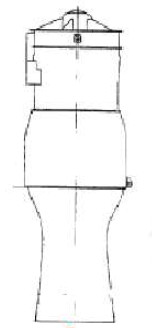
“Zoom 2” (PeT)
-The Zoom 2 project was exactly that, a project. It was from 1962. It is notably different because of the Laval nozzle that leads to its outlet.
-This also makes it difficult to install on many devices due to its length.
-The M36 SF is the same M36 but with the addition of a directional nozzle to make lateral control of elevation possible.
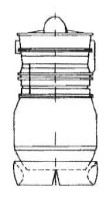
“M36 SF”
-The M41 was made in two versions, A and F. The A was single flow and the F was double flow (fan).
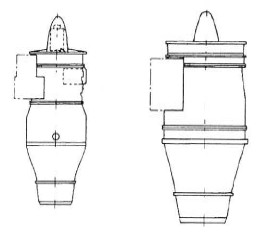
“M41 A and F”
-And now the surprising “flat” (or “plat” engine in French).
-From the following year, 1963, it did not reach one meter in diameter but its length was extraordinarily short, nor did it reach half a meter. The thrust was 2,200 Kgf.

“Plat Layout” (PiP)
-With a brilliant architecture, it had a double fan with turbines inserted so that it sucked in from the outside and after passing through the chambers, it exhausted through the center.
-When we visit the Snecma Museum we must not forget the test bench used in the times of the Atar. It is recovered and displayed as if it were a factory unit.
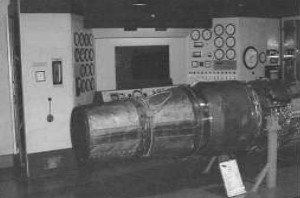
“Snecma test bench, withdrawn from service”
-Snecma has collaborated with other factories in the world for their projects to power aircraft in their country and international commitments, thus, there were agreements with P&W, GE, Rolls-Royce, Turbomeca, etc.
-A quick review of some of these programs shows us that they have been important and transcendental collaborations for military and also civil aviation, in the case of Concorde.
-Snecma is involved in the construction of the Bristol Olympus engine (for a long time in Rolls-Royce) but which we saw with the initials of the following joint logo.

“Bristol Siddeley-Snecma Logo”
-The Olympus engine that powered the SST Concorde (I say powered, because the plane has been retired from service) was the 593.
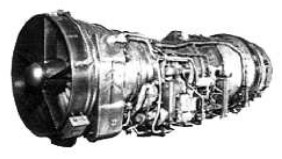
“Olympus 593-610”
-Curiously, it had afterburning in a civil airplane. The nominal dry thrusts of 14,300 DaN rose to 16,900 DaN with afterburning.
-The diameter of the engine was relatively small for its total length, 1.15 x 7.2 meters.
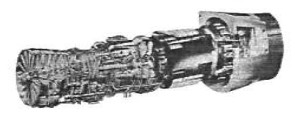
“A cutaway for the Olympus 539-610”
-It hat double shaft, LP and CV, rotating at 6,500 and 8,530 rpm, which was relatively low. It had the capacity to maintain Mach 2 continuously, perhaps the only civil engine that could do so (see Russians).
-The Concorde made its first flight in January 1976, after a process of homologation and testing on aircraft 01 and 02 that began in 1969. (see precedents of the Olympus in BS and RR since it was already carried by V bombers such as the Vulcan.
-Here we have to comment that for high-speed flights and at the time we are dealing with Atar and supersonic flights. Snecma developed turbo-rocket engines as did the English, Russians and Americans.

“Snecma Turbo-rocket engine”
-In 1954 the Snecma company obtained the patent number for a turborocket like the one in the previous figure (DAS 1,025,681).
-With Turbomeca they would develop and build the Larzac with a thrust greater than 1,000 Kgf, intended especially for Alphajet training aircraft.
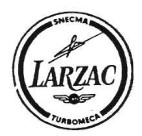
“Larzac logo”
-We see in the logo, the names and symbols of Snecma and Turbomeca (Brevets Szydloski).

“Snecma-Turbomeca Larzac”
-Known in Snecma as the M49 project, it belonged to the family of engines designated with the letter “M”.
-Later M49 was never used commercially again but the name Larzac was used instead.
-We have the Larzac 04 version, from 1,200 to 1,320 Kgf of thrust.
-MTU and KHD are associated with the construction of this engine.
-The Larzac would be built in the United States by the Teledyne Continental company as the CAE 490 (see), around 1973. Later it was mounted on the Alphajet.
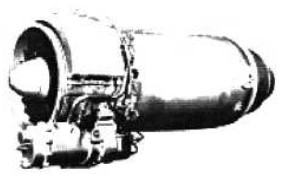
“Larzac 04”
-It had double shaft: 2LPC+4CVC and 1CVT+1LPT. Its rotation was more normal, since the LP shaft did so at 17,300 rpm and the HP at 22,900 rpm.
-The Larzac 04 from GTRS (Turbomeca/Snecma) was in production with RR and MTU.

“Larzac 04 for the Jaguar”
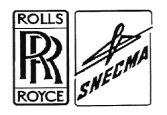
“RR-Snecma joint logo”
-In collaboration with the Bristol division of Rolls-Royce, the “Mars” was manufactured in the mid-1960s. A name recovered from the previous piston engine, for the new M45 and many of its parts, mainly the compressor, were based on the BS116.
-It started in the 1,500 Kgf range and reached 3,500 Kgf with the M45H.
-And if it also started as a “by-pass” it would end up as a double flow with a high dilution ratio.

“RR-Snecma M45, Mars”
-Following the evolution of this engine we find nozzle extensions, afterburning and also a name change such as By-pass to High Dilution and Fan.

“RR-Snecma, M45A”
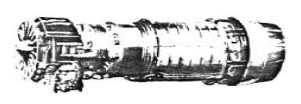
“RR-Snecma, M45B”
-The B is the same engine as the A but with the installation of an afterburner and a variable outlet nozzle.
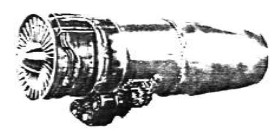
“RR-Snecma, M45F”
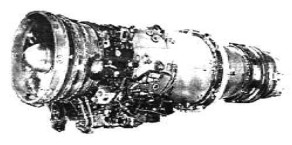
“RR-Snecma, M45G”
-The M45G2, designed jointly with the Bristol (RR), had a pressure ratio of 1.21 and with afterburning it gave 13,250 lbf.
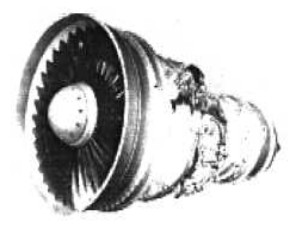
“RR-Snecma, M45H”
-The M45H, as already mentioned, is a turbofan with one fan stage, 5 low-pressure compressor stages, 7 high-pressure compressor stages, which adds up to a total of 13 stages in the compression part.
-It has four turbines, one for high pressure - that of the gas generator - and three for low pressure and a united fan.
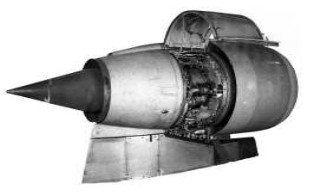
“Photo of a Snecma M45H on a VFW 614”
-The installation on top of the wing of the VFW 614 aircraft was curious.
-This forces the mechanics to make additional efforts since the rise and fall of the wing are constant. On the other hand, it is not convenient for the passengers, when looking through the window, to see any oil leak outside the hood, or any flames coming out of the nozzle.
-The idea of this assembly did not prosper, although it was not for the reason mentioned above.
-At that time and perhaps due to international circumstances, North American engines were also manufactured.
-In fact, some such as the J-57 (and the civil JT3D) and the J-75 (civil JT4D) were already being reviewed. Snecma is a big organization with different departments.
-With Pratt & Whitney the TF-106 was made from the JTF-110, intended for the Mirage III-T and the VTOL Mirage III-V.

“PW-Snecma TF-106”
-The TF-106 is a turbofan with afterburner that gives 9,000 Kgf of thrust. The Mirage III-V carried another 8 RR-162 engines for vertical takeoff.
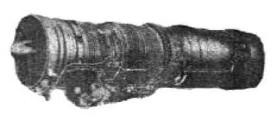
“PW-Snecma TF-306”
The TF-306 was derived from the P&W TF30 and gave 9,000 kgf of thrust with afterburning. Dry, the thrust dropped to 5,150 kgf.
-There was the TF104 from the same collaboration and it seems that the M35 was a variant of the JT11b.

“Snecma M53”
-The M53 is considered the Super Atar because at the end of the evolution of the Atar family, the entire concept was modernized, receiving the new name of M53.
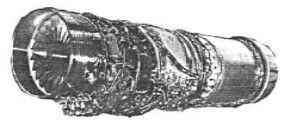
“M53-P2”
-The M53 powered the Mirage 2000 gave 95 kN. The P2 version is shown below.

“M53-P2”
-The Mirage 2000, apart from France, is also used by the United Arab Emirates.
-The M53-P2 was intended for the Mirage 2000, more powerful than the M53-5. Both versions, -P2 and the -5, were to reach Mach 2.5. The former gave a thrust of about 21,300 lbf with afterburning and the latter almost 20,000 lbf, with afterburning naturally.
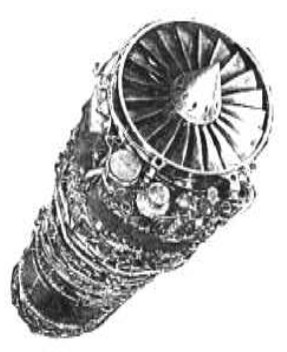
“Snecma, M53-5”
-The M53-5 was produced in the factory between 1980 and 1985 and was mounted on the initial series of the Mirage 2000 aircraft. Later this engine was replaced by the M53-P2.
-In general, the M53 gave 20% more power than the 9K-50, very useful for the Mirage G4 and F1 as well.
-Later the M88 appeared. This was a turbofan project that started in 1980 and the engine ran for the first time in 1984 but delivering began in 1996 to power the Rafale.
-The M88 is dual body, dual flow and with afterburning.


“Snecma M88”
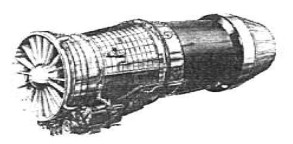
“Snecma M88”
-At its presentation the M88 was shown in the artist's impression in the above illustration.
-Later it would result in an engine that gave more than 11,000 lbf dry and 16,800 lbf with afterburning (in the M88-2).
-France proposed it for the future European fighter that would finally use the EJ-200 manufactured by a consortium from the continent.
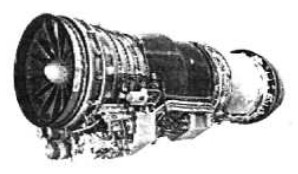
“Snecma M88-2”
-It had an architecture similar to the GE F404 (see), with a three-stage fan.
-A single six-stage compressor, two turbines, one for each shaft.
-The very generous by-pass led to the large afterburner zone with the corresponding flame stabilizing rings.
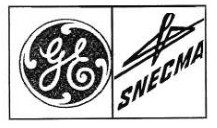
“General Electric-Snecma Logo”
-As with P&W, engines have also been made jointly with GE, for example the CF6 and later in an international consortium, the CFM-56.
-In the civil range, the CF6 made by the international group (MTU, Volvo and Fiat also participated), the first engine ran in 1972.
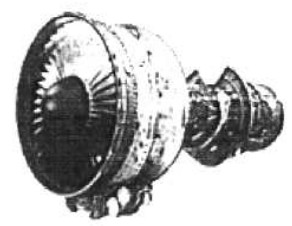
“GE-Snecma CF6”
-The presented CF6-50E had the US military designation of F103-GE-100.
-It is a high bypass turbofan with a double shaft that gave 51,000 lbf of thrust.
-As we will see, General Electric has also participated in the GE-90 and it seems that it did so in the GE-36 as well.
-The Japanese IHI and Italian Avio (Fiat) also participate in the GE-90. The first run was done in 1993.
-These engines have been mainly destined for the Boeing 777.
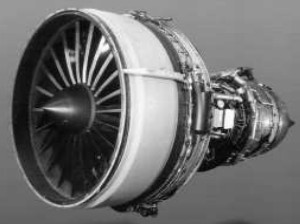
“GE-90”
-It was designed to produce 92,000 lbf (410 KN). Of the versions manufactured, we have the -77B which gave 332 KN.
-With the -90B version the thrust increased to 408 Kn and with the -94B it reaches 512 KN for the B777-300ER and B777-200LR aircraft.
-Now we enter the also civil CFM56, made by the international consortium created by GE and Snecma.
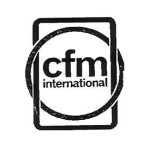
“CFM logo for the 56 engine”
-Smaller than the CF6, the CFM-56 belongs to the group of engines between 20,000 lbf and 24,000 lbf in their beginnings.
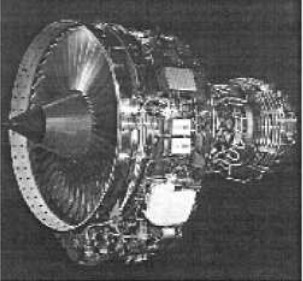
“CFM-56-2”
-The -2 and -3 are shown. They have been used to repower the B-707 and DC-8. As well as the KC-135 and C-135 and to be installed on new aircraft such as the B-737-300 and Airbus A-310.

“CFM-56-3”
-The CFM-56 engines are now in versions -5A, -5B and -5C.
-The first, the -5A in its variants 1, 3, 4 and 5 (-5A1, etc.) reaches 26,500 lbf of thrust and was intended for the Airbus A-320.
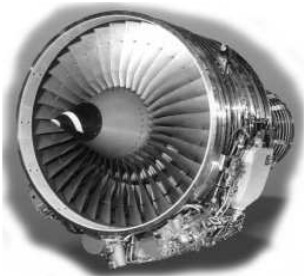
“CFM-56-5A”
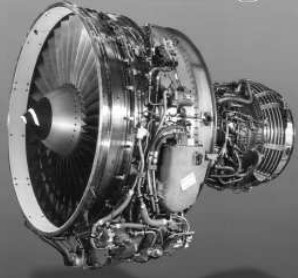
“CFM-56-5B”
-The B, in variants 1 to 7 are intended for Airbus A-318, A-319, A-329 and A-321 aircraft.
-The engines delivered between 23,500 and 32,000 lbf of thrust.
-The latest CFM56-series 7B with 18,500 to 27,300 lbf thrust are intended for the Boeing 737-600/700/800/900 and BBJ.
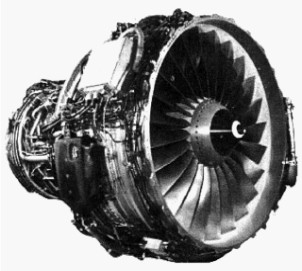
“CFM56-7B”

“CFM-56-5C”
-The 5C gives up to 34,000 lbf of thrust in the -5C4 variant. they were destined for the A-340-200 and 300.
-Of the known collaborations, the SaM-146 engine is very interesting. It is the result of an agreement between Snecma Moteurs and the Russian NPO Saturn to develop the engine for the new Sukhoi RRJ (Russian Regional Jet) regional transport aircraft.
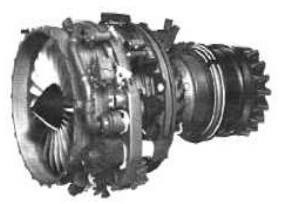
“SaM-146”
-The SaM-146 appears written many times as SM-146 and SAM-146). It will be a family of engines with 14,000 to 17,500 lbf of thrust. For its construction, the VolgAero company has been created, which brings together several engine parts manufacturing companies located in the important aeronautical city of Rybinsk.
-And for the realization of the SaM-146, management, design, production, marketing and support, Powerjet SA has been founded. See.
-The SaM-146 engine was originally known as SM-146. The added “a” is due to the NPO Saturn entry.
-Perhaps the last European agreement in which Snecma intervenes is the one formalized for the construction of the A400M military transport engines, to replace the Hercules, Noratlas, Transall, etc., which are still used.
-It seemed that at first it was going to be a turbofan but the final decision is for a turboprop.
-The Aero Propulsion Alliance or APA has been created for this and Snecma provided the base of the M88 to build the engine and it is as it appears below.
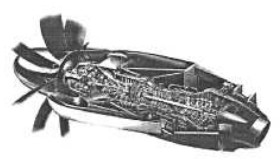
“APA, TP-400”
-The multi-blade propeller with almost 6 meters. in diameter must absorb the approximate 13,000 CV to the shaft that the TP-400 engine will be able to supply.
-In 2006, Snecma has opened a new line of engines for business aviation. It was presented at the NBAA.
-They are planned for a power range of 8000 to 11000 lbf. These engines will be named “Silvercrest.”
-Three views of this new Snecma engine are offered below.

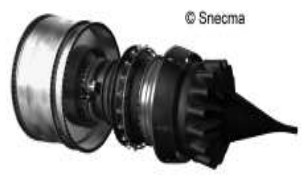
“Two Silvercrest views”
-We close the topic of turbines by mentioning that Snecma has also carried out research on engines for hypersonic flights, for Mach 3 and more. Snecma received studies from Onera, SEP, etc. - companies that joined it - that have maintained interest. On the other hand, structure manufacturers are also interested in the issue of flights at very high speeds.
-In fact, from the moment that Sänger presented his hyperbolic and supersonic flight aircraft to reach the American coasts, in 1942, to more current projects such as those of the Lockheed Aurora and others, they have not given up the study of these engines, be they Turborockets, Spike, Scramjets, or pure rockets. We present Snecma's 1992 study of two hypersonic engines.
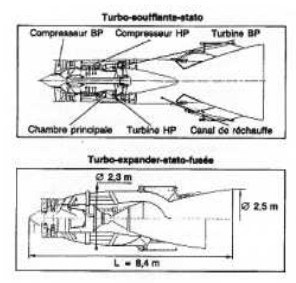
“Two Snecma solutions”
-Since 1960 In the industrial branch, Snecma has been interested in turbines to create electrical energy. This is how it supplies Turboma engines to Electricité de France (EDF). And to the French Navy for propulsion.
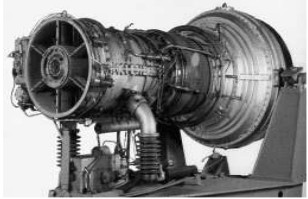
“Turboma”
-They are based on the M53 core and other versions on the M38.
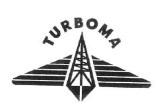
“Turboma logo”
-It is to meet this demand for industrial and marine turbines that Snecma creates Turboma.
And almost finishing the Snecma chapter we now discuss rocket engines. We know that Snecma absorbed SEPR and with it SCEPR and LRBA and founded the SEP, which is located in the northern part of the same place in Villaroche.
-The rocket engines currently in production at Snecma that are used in European space programs such as Ariane, the HM7, Vulcain, Vinci and the Ariane V boosters, remain. For the others (Vexin, Coralie, Viking, etc.) see the SEP chapters and SEPR mainly.
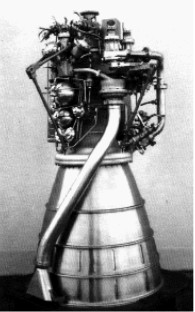
“El HM7”
-The HM7 is at the HM7B level and is used in the upper stage of the Ariane 5 ECA. It runs on LOX and LH2 cryogenics. of almost 65 KN for 446 seconds.
-The Vulcain has also advanced to Vulcain 2. Several companies are involved in its construction in addition to Snecma: Volvo, Avio, EADS ST GmbH (see also Daimler) and Techspace Aero. It gives 1340 KN for 431 sec.
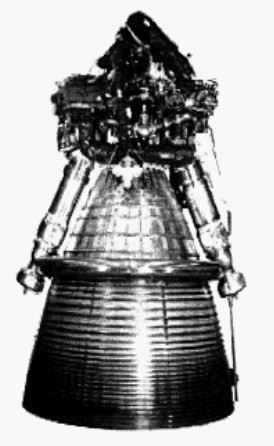
“Vulcain 2”
-It runs on the same fuels as the HM7B. It is the engine that is under the central tank of the Ariane 5. It can be seen - and touched - at the Cité de l'Espace in Toulouse. It is in the building just below the life-size model of the rocket that carries it.
-The latest in rocket engines is the Vinci, a new generation engine for upper stages to replace the HM7B.
-It has a long, high-height nozzle. The combustion chamber is shown below and the controls are located on the head of this chamber.
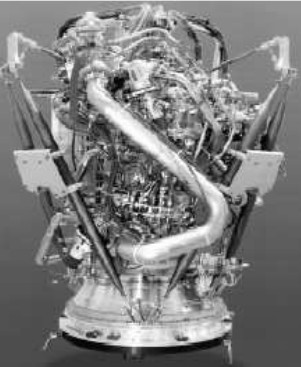
“Vinci combustion chamber”

“Complete Vinci”
-The complexity of the modern Vinci head is apparent due to the decrease in the size of the components, compared to the HM7. It's because of electronics and microvalves.
-Giving 180 KN and a specific thrust of 465 seconds, it is prepared to be used in future generations of orbital vehicle launchers.
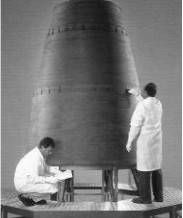
“Size ratio”
-Snecma has its Solid Propulsion division. Thus Snecma together with Fiat-Avio (Europropulsion) builds the MPS (Solid Propulsion Motors). The P80 are the ones that have been used in the Ariane 5.
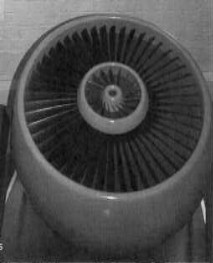
“P80 outlet nozzle”
-If anyone had assumed that a simple outlet nozzle was going to be so complicated, they would not have believed it.
-New materials and the undesirable effects of temperatures, vibrations, etc., must be controlled.

“MPS Division Logo”
-Around 2000, Snecma and P&W agreed to manufacture the SPW-2000, a 23,500 Kgf rocket motor for the Ariane 5 and the Atlas 5 (looking for a successor to the PW's RL50).
-But the ESA rejected the program to support the Vinci precisely.
-On the topic of plasma engines, Snecma has recently made the PPS1350 ion engine.
-It is conceived and built in the same company for use in the Smart-1 lunar probe.
-The project comes from Russian technology through OKB Fakel. Snecma had previously made the SPT100.
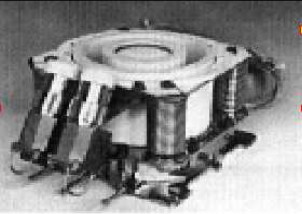
“PPS-1350” (PiP)
-As indicated in the section dedicated to piston engines, Snecma has taken over SMA engines, see (previously also Socata-Renault).

“Snecma-SMA SR305-230”
-It is a compact diesel engine, of identical dimensions to its American equivalents, completely suitable to replace them and consuming Jet A-1. 230 CV.
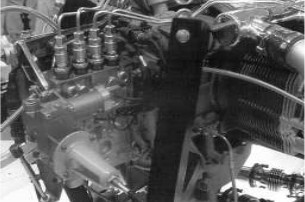
“Injection pump details"
-The injection pump is a classic piston and monobloc pump, installed at the rear of the engine as if it were a magneto.
-The engine is single-lever: an electronic control provides the appropriate fuel and the relevant propeller pitch according to the position of the throttle control and the flight circumstance.
-And now, finally regarding Snecma-Safran, I would like to tell the readers of this publication that this company has a superb museum, the Snecma Museum in Villaroche, southeast of Paris, about 60 km from the center.
-With more than 4,000 square meters where you can satisfy your curiosity about what this brand has done and what it has absorbed, as we mention continually.
-From the Gnome and Le-Rhone (better, from the Seguin and Verdet) until recent times. Everything is conveniently explained.
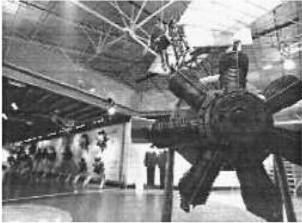
“View of the Museum”
-We can see rotaries of all types, fixed radials, Hispano-Suiza, Renault, Regnier, Cohetes, Atar turbojets, etc. In the photo we see radial engines hanging on the wall.
-Sentimentally, the entrance gate of the old Hispano Switzerland factory in Bois-Colombes, which is preserved in this museum, draws our attention.
From Appendix 6: At the 2009 Paris Motor Show, Snecma showed an artistic concept of the “Open Rotor” evaluated by CFM/Snecma.
-It is a turbofan without fairing in effect and the gas generator is based on the same one from another parallel study, that of LEAP-X.
-The consumption is presumed to be 16% lower (with the intention of reaching 39% less years later) than the classic and already economical CFM-56 and also with half the combustion waste.
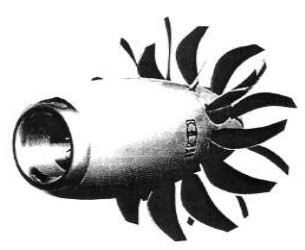
“The Snecma Open Rotor”
-On a last visit to the Museum of the “Ailes Anciennes de Toulouse” we were able to locate the remains of a TB-1000. See main text.
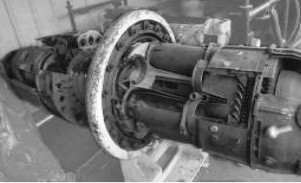
“TB-1000 engine”
-The engine is located in a semi-outdoor shed and generally shows rusty ferrous surfaces.
-It is a cutaway as a school demonstrator.
-The first one was the TA-1000 and both were the first turbines of French design just after WWII, a mixture of German and French technologies.
-Perhaps it was given to the Museum by the former Toulouse aeronautical school ENSICA.
-In the main text is mentioned the 14-cylinder radial engine model 14 X-H for helicopters of which there was no illustration. Now we are able to show one.
-It was supercharged in double row and air-cooled. The engine ran in a vertical position. There was a cooling fan for ground maneuvers or hovering.
-With 1,159 cu. in. of total displacement it gave 790 CV at 2,700 rpm.

“Snecma 14 X-H”
-There was an interesting test on a Snecma M56 engine, in which the fan air flow is divided from the gas generator flow, before entering the engine.
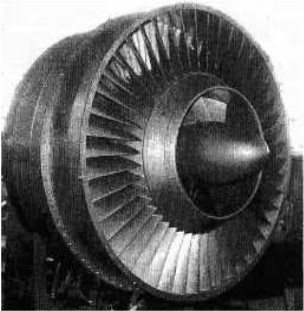
“Snecma M45, with split intake”
-Normally the flow division occurs behind the fan: an air from the fan “by-passes” around the engine and another more centered flow is introduced into the engine itself, or gas generator.
From Appendix 7: Snecma is now in the Safran Group. Below we show a new photo from a catalog of the brand referring to the “Silvercrest”, the engine for business, private and some 3rd level aviation.
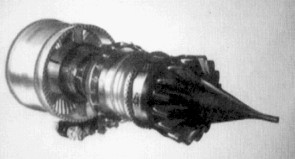
“Snecma-Safran Silvercrest”
-In this photo there is the accessory box already.
From Appendix 9: Here are some rocket engines built by this French national factory. that are to be included in the list of those that already appear in the main text.
-Aurore
-MT-27
-SPW-2000 (together with PW)
-Vinci (from the Ottobrunn office)
-Located by Evzen (AEHS) a Snecma 12T-06 which turns out to be a copy of the Argus AS-410, according to the indications of the Museum where it is exhibited.

“Snecma 12T-06 inverted 12V motor”
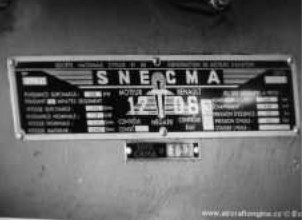
“Snecma 12V engine plate”
Engines of SNECMA
Model: 12S
Arquitecture:
Cooling:
Total Displacement:
Bore / Stroke: x
Power:
Weight:
Model: 12T
Arquitecture:
Cooling:
Total Displacement:
Bore / Stroke: x
Power:
Weight:
Model: 28T
Arquitecture:
Cooling:
Total Displacement:
Bore / Stroke: x
Power:
Weight:
Model: 32H-L
Arquitecture:
Cooling:
Total Displacement:
Bore / Stroke: x
Power:
Weight:
Model: 36T
Arquitecture:
Cooling:
Total Displacement:
Bore / Stroke: x
Power:
Weight:
Model: 42T
Arquitecture:
Cooling:
Total Displacement:
Bore / Stroke: x
Power:
Weight:
Model: 4L, Regnier
Arquitecture:
Cooling:
Total Displacement:
Bore / Stroke: x
Power:
Weight:
Model: 4LO, Regnier
Arquitecture:
Cooling:
Total Displacement:
Bore / Stroke: x
Power:
Weight:
Model: 4P, Renault
Arquitecture:
Cooling:
Total Displacement:
Bore / Stroke:
Power:
Weight:
Model: 6Q, Renault
Arquitecture:
Cooling:
Total Displacement:
Bore / Stroke: x
Power:
Weight:
Model: Atar M3
Arquitecture:
Compressor/s:
Combustion chambers:
Turbines:
Power / Thrust:
Weight:
Model: Atar-101
Arquitecture:
Compressor/s:
Combustion chambers:
Turbines:
Power / Thrust: / ---
Weight:
Model: Atar-8
Arquitecture:
Compressor/s:
Combustion chambers:
Turbines:
Power / Thrust: / ---
Weight:
Model: Atar-9
Arquitecture:
Compressor/s:
Combustion chambers:
Turbines:
Power / Thrust: / ---
Weight:
Model: Aurore
Arquitecture:
Compressor/s:
Combustion chambers:
Turbines:
Power / Thrust: / ---
Weight:
Model: BMW-132Z
Arquitecture:
Cooling:
Total Displacement:
Bore / Stroke: x
Power:
Weight:
Model: Bristol Hercules (Lic)
Arquitecture:
Cooling:
Total Displacement:
Bore / Stroke: x
Power:
Weight:
Model: Bristol Olympus
Arquitecture:
Cooling:
Total Displacement:
Bore / Stroke: x
Power:
Weight:
Model: Ecrevisse, valveless pulse jet
Arquitecture:
Chambers:
Fuels:
Feed System:
Ignition:
Thrust:
Weight:
Model: Escopette, valveless pulse jet
Arquitecture:
Chambers:
Fuels:
Feed System:
Ignition:
Thrust:
Weight:
Model: G-R 14 NC Diesel
Arquitecture:
Cooling:
Total Displacement:
Bore / Stroke: x
Power:
Weight:
Model: G-R 14 Super Mars
Arquitecture:
Cooling:
Total Displacement:
Bore / Stroke: x
Power:
Weight:
Model: G-R 14M
Arquitecture:
Cooling:
Total Displacement:
Bore / Stroke: x
Power:
Weight:
Model: G-R 14N
Arquitecture:
Cooling:
Total Displacement:
Bore / Stroke: x
Power:
Weight:
Model: G-R 14R
Arquitecture:
Cooling:
Total Displacement:
Bore / Stroke: x
Power:
Weight:
Model: G-R 14U
Arquitecture:
Cooling:
Total Displacement:
Bore / Stroke: x
Power:
Weight:
Model: G-R 14X
Arquitecture:
Cooling:
Total Displacement:
Bore / Stroke: x
Power:
Weight:
Model: G-R 18R
Arquitecture:
Cooling:
Total Displacement:
Bore / Stroke: x
Power:
Weight:
Model: GE-Snecma CF-6
Arquitecture:
Compressor/s:
Combustion chambers:
Turbines:
Power / Thrust:
Weight:
Model: GE-Snecma CFM-56
Arquitecture:
Compressor/s:
Combustion chambers:
Turbines:
Power / Thrust:
Weight:
Model: Hispano-Suiza 12B, V-12
Arquitecture:
Cooling:
Total Displacement:
Bore / Stroke: x
Power:
Weight:
Model: Hispano-Suiza 12Y, V-12
Arquitecture:
Cooling:
Total Displacement:
Bore / Stroke: x
Power:
Weight:
Model: Hispano-Suiza 12Z, V-12
Arquitecture:
Cooling:
Total Displacement:
Bore / Stroke: x
Power:
Weight:
Model: HM7
Arquitecture:
Chambers:
Fuels:
Feed System:
Ignition:
Thrust:
Weight:
Model: LEAP-XIC (base CFM-56)
Arquitecture:
Compressor/s:
Combustion chambers:
Turbines:
Power / Thrust: / ---
Weight:
Model: M-36
Arquitecture:
Compressor/s:
Combustion chambers:
Turbines:
Power / Thrust: / ---
Weight:
Model: M-41
Arquitecture:
Compressor/s:
Combustion chambers:
Turbines:
Power / Thrust: / ---
Weight:
Model: M-45
Arquitecture:
Compressor/s:
Combustion chambers:
Turbines:
Power / Thrust: / ---
Weight:
Model: M-49 Larzac
Arquitecture:
Compressor/s:
Combustion chambers:
Turbines:
Power / Thrust: / ---
Weight:
Model: M-53
Arquitecture:
Compressor/s:
Combustion chambers:
Turbines:
Power / Thrust: / ---
Weight:
Model: M-88
Arquitecture:
Compressor/s:
Combustion chambers:
Turbines:
Power / Thrust: / ---
Weight:
Model: MT-27 rocket engine
Arquitecture:
Chambers:
Fuels:
Feed System:
Ignition:
Thrust:
Weight:
Model: NPO Saturn / Snecma SaM-146
Arquitecture:
Compressor/s:
Combustion chambers:
Turbines:
Power / Thrust: / ---
Weight:
Model: PPS-1350
Arquitecture:
Chambers:
Fuels:
Feed System:
Ignition:
Thrust:
Weight:
Model: Prometheus
Arquitecture:
Compressor/s:
Combustion chambers:
Turbines:
Power / Thrust: / ---
Weight:
Model: PW-Snecma TF-106
Arquitecture:
Compressor/s:
Combustion chambers:
Turbines:
Power / Thrust: / ---
Weight:
Model: PW-Snecma TF-306
Arquitecture:
Compressor/s:
Combustion chambers:
Turbines:
Power / Thrust: / ---
Weight:
Model: RR/Tyne (Lic)
Arquitecture:
Compressor/s:
Combustion chambers:
Turbines:
Power / Thrust: / ---
Weight:
Model: S400 series
Arquitecture:
Chambers:
Fuels:
Feed System:
Ignition:
Thrust:
Weight:
Model: Silvercrest series
Arquitecture:
Compressor/s:
Combustion chambers:
Turbines:
Power / Thrust: / ---
Weight:
Model: SMA-350, boxer Diesel
Arquitecture:
Cooling:
Total Displacement:
Bore / Stroke: x
Power:
Weight:
Model: Snecma/Rateau S-65
Arquitecture:
Compressor/s:
Combustion chambers:
Turbines:
Power / Thrust: / ---
Weight:
Model: TA-1000
Arquitecture:
Compressor/s:
Combustion chambers:
Turbines:
Power / Thrust: / ---
Weight:
Model: TB-1000
Arquitecture:
Compressor/s:
Combustion chambers:
Turbines:
Power / Thrust: / ---
Weight:
Model: TP-400-D6 (con APA)
Arquitecture:
Compressor/s:
Combustion chambers:
Turbines:
Power / Thrust: / ---
Weight:
Model: Vesta
Arquitecture:
Compressor/s:
Combustion chambers:
Turbines:
Power / Thrust: / ---
Weight:
Model: Vinci
Arquitecture:
Compressor/s:
Combustion chambers:
Turbines:
Power / Thrust: / ---
Weight:
Model: Vulcain I y II
Arquitecture:
Compressor/s:
Combustion chambers:
Turbines:
Power / Thrust: / ---
Weight:


